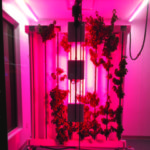 With such a strong focus on creating networking opportunities for attendees, we sometimes neglect their need for the opposite: quiet spaces to mentally recharge. The packed programming at many conferences and events is not set up to support attendees’ need for privacy or “alone time” by building in breathing spaces in the schedule. PCMA Convening Leaders 2016 General Session speaker Juliet Funt talked to Convene about this need for “white space” in advance of her presentation this January in Vancouver. A separate — and no less important — issue is that the physical space at convention centers and hotels often is not configured to provide those private areas for attendees to mentally regroup.
With such a strong focus on creating networking opportunities for attendees, we sometimes neglect their need for the opposite: quiet spaces to mentally recharge. The packed programming at many conferences and events is not set up to support attendees’ need for privacy or “alone time” by building in breathing spaces in the schedule. PCMA Convening Leaders 2016 General Session speaker Juliet Funt talked to Convene about this need for “white space” in advance of her presentation this January in Vancouver. A separate — and no less important — issue is that the physical space at convention centers and hotels often is not configured to provide those private areas for attendees to mentally regroup.
 Workspring Meeting Experiences, an experience design brand of Steelcase focused on designing for the meetings industry environment, addressed this topic in a recent post on its blog. “The need for privacy — at work as well as in public — is as basic to human nature as is the need to be with others,” said Donna Flynn, director of the Steelcase WorkSpace Futures research group, a team of strategists and researchers focused on the future of the workplace and beyond.
Workspring Meeting Experiences, an experience design brand of Steelcase focused on designing for the meetings industry environment, addressed this topic in a recent post on its blog. “The need for privacy — at work as well as in public — is as basic to human nature as is the need to be with others,” said Donna Flynn, director of the Steelcase WorkSpace Futures research group, a team of strategists and researchers focused on the future of the workplace and beyond.

Insights gathered by Steelcase researchers revealed that supporting well being and privacy needs at conferences and events requires environmental diversity. People need privacy for different reasons and timeframes — it may mean finding a spot to sit and focus for an hour or locating an area to calm the mind amid the chaos for just 10 minutes.
Here are some of their recommendations for carving out these spaces:
Focus or quiet areas allow people to comfortably get work done within the facility, as well as indulge in much needed alone time. When creating these dedicated places, ensure they have power outlets and are free from distractions – even prohibiting the use of phone conversations.

Phone booths or dedicated phone areas would go a long way in improving attendee satisfaction, for those who seek out quiet places to carry on a phone conversation and those who feel those conversations are intrusive in general public spaces. A nap room may not be viable at every conference, but would certainly attract those suffering from jet lag.
At a recent TED event, the Steelcase Workspring team created a room that was used for naps as well as meditation. For a heightened experience, consider engaging the senses by dimming the lights, playing soft Zen music, or lighting scented lavender candles to help relieve stress.




